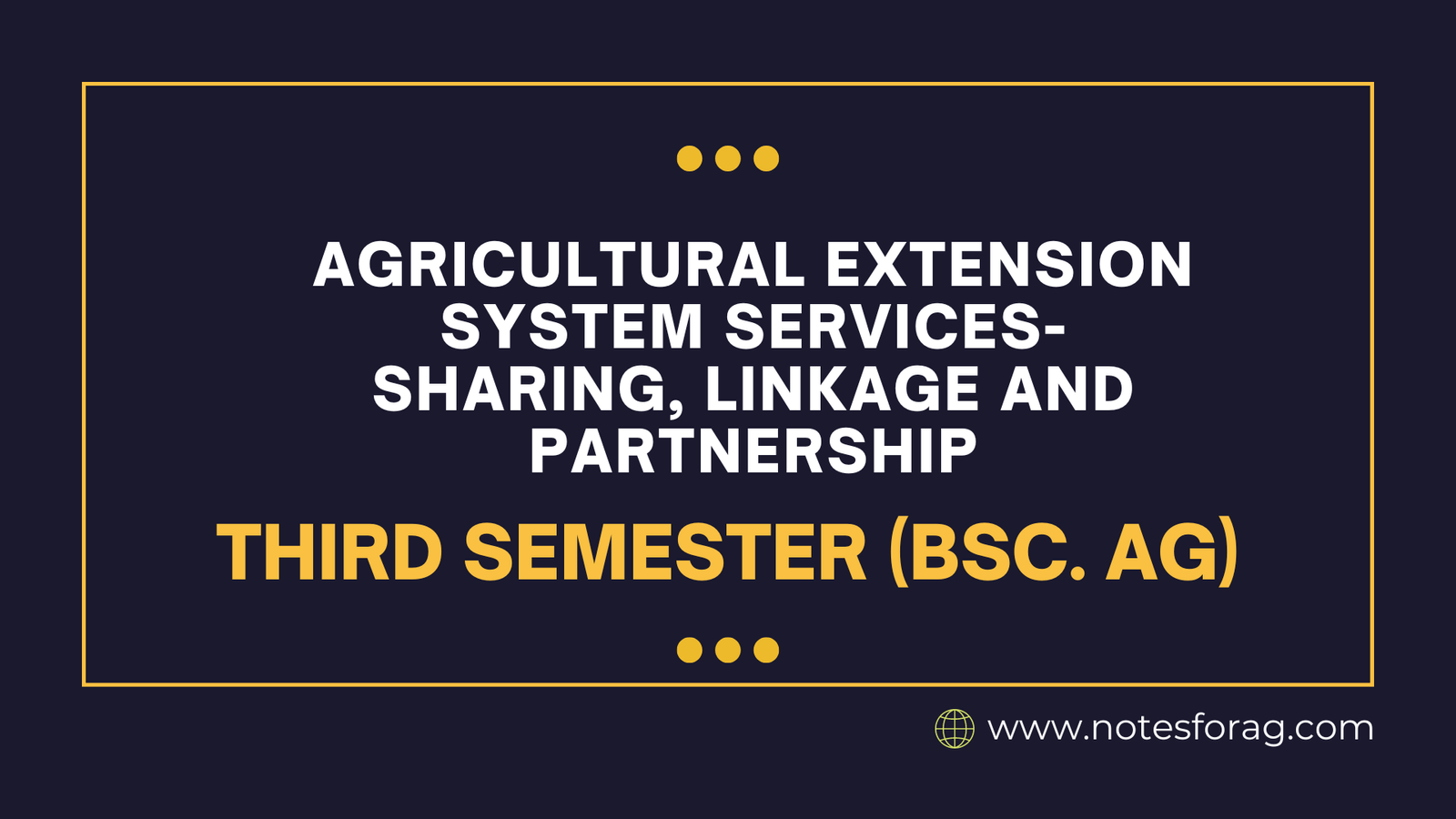Sharing, linking, and cooperation are important processes in agricultural extension system that improve the efficiency and efficacy of service delivery to farmers. These principles are critical for facilitating the transfer of knowledge, technology, and resources between sectors and stakeholders. Sharing aids in the distribution of information and technology, linkage promotes coordinated support among multiple groups, and partnerships pool resources and experience to better service delivery. These methods improve the agricultural extension system by making it more effective, efficient, and responsive to farmer demands.
Table of Contents
Understanding Agricultural Extension System
Agricultural extension systems serve an important role in supporting agricultural development by connecting research institutions with farmers. These systems are intended to distribute knowledge, technologies, and best practices that will improve agricultural productivity and sustainability. The value of agricultural extension system resides in their ability to provide farmers with the necessary skills and information to adapt to changing conditions and enhance their livelihoods.
Historically, agricultural extension system have progressed from simple information campaigns to more complex, participatory approaches that involve farmers in decision-making. Extension began with the goal of propagating improvements in crop and livestock management, but has since expanded to include climate change adaptation, resource management, and market access.
There are several sorts of extension services available, including public, private, and non-governmental organizations (NGOs) that provide various forms of assistance. Public extension services, which are often run by government agencies, attempt to reach as many farmers as possible, with a concentration on small-scale agriculture. Private extension services, on the other hand, frequently provide tailored expertise and technological solutions to specific clients, such as agribusinesses. NGOs frequently fill gaps created by the governmental and corporate sectors, focusing on underserved groups and providing personalized interventions.
1. Sharing
Sharing in agricultural extension system is the distribution and sharing of knowledge, information, and technology among diverse stakeholders, such as farmers, extension workers, researchers, non-governmental organizations (NGOs), and government agencies. The purpose is to give farmers with up-to-date and accurate information about best practices, new technology, market trends, and more.
- Knowledge Sharing: Farmers offer traditional knowledge, and extension workers provide scientific knowledge.
- Technology Sharing: Farmers benefit from innovations like new farming equipment and crop varieties.
- Data Sharing: Farmers, extension officers, and researchers can communicate information about the weather, soil conditions, pests, and illnesses.
2. Linkage
Linkage refers to the links made between various players in the agricultural system. These links make it easier to coordinate and cooperate among the various entities participating in extension services. Linkages guarantee that farmers have access to a diverse support network that includes research institutions, government agencies, the commercial sector, and civil society organizations.
- Research-Extension Links: Ensures that agricultural research findings are translated into improved procedures or crops for farmers.
- Farmers-Extension Links: Provides a two-way flow of information in which extension staff assist farmers with challenges and farmers provide comments on techniques or innovations.
- Public–Private Partnerships: Collaboration between government agencies and private enterprises to ensure that agricultural technologies reach more farmers.
3. Partnership
Partnerships in agricultural extension are collaborations between several entities to achieve common aims. These can be public-public, public-private, or private-private collaborations that pool resources, skills, and networks to improve service delivery.
- Public-private partnerships (PPPs): Governments may work with private-sector enterprises to provide extension services, particularly in areas such as input supply, market access, and mechanization.
- Partnerships Between NGOs and Farmers: Non-governmental organizations collaborate with farmer groups to solve specific issues such as sustainable practices and climate resiliency.
- Institutional Partnerships: Collaboration among universities, research institutes, and extension agencies can help to produce farmer-centric technologies.
Benefits of Sharing, Linkage, and Partnership
- Enhanced Knowledge Dissemination: Better teamwork guarantees that valuable knowledge is broadly disseminated.
- Innovation and Research Uptake: Improved linkages ensure that research reaches the field faster and is more relevant to farmers’ needs.
- Resource Efficiency: Partnerships enable the pooling of resources, which reduces duplication of effort and expands the reach of extension services.
- Sustainability: Extension systems become more robust and capable of solving complex agricultural concerns such as climate change and food security when a wide range of stakeholders are involved.
These methods contribute to the development of a more inclusive, responsive, and flexible agricultural extension system that benefits all stakeholders in the agricultural value chain.
Frequently Asked Questions
What is the importance of sharing in agricultural extension services?
Sharing is essential in agricultural extension because it ensures the timely distribution of information, technology, and knowledge among farmers, extension workers, researchers, and other stakeholders. This enables farmers to adopt new methods and technologies, increase productivity, and manage difficulties more effectively.
What are the benefits of public-private partnerships (PPP) in agricultural extension?
Public-private partnerships (PPPs) combine the benefits of both sectors. The public sector assures equitable access to services, whilst the private sector offers innovation, resources, and market-driven approaches. They work together to improve the scope, quality, and sustainability of agricultural extension services.
Related Articles

